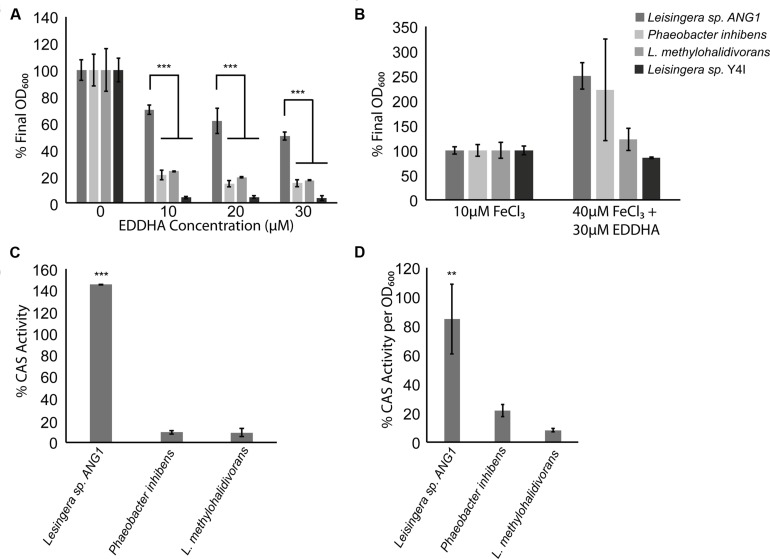FIGURE 5.
Roseobacter clade symbionts from the ANG have a growth advantage in iron-limiting conditions, possibly due to siderophore production. (A) While other Roseobacter clade organisms were inhibited by the presence of an iron-chelator, Leisingera sp. ANG1 grew to more than 50% of its optical density even if EDDHA was at three times the concentration of available iron. (B) EDDHA is not toxic to Roseobacter clade organisms, as adding enough iron to overwhelm the chelator restored the growth defect to all Roseobacter clade organisms. (C) Leisingera sp. ANG1 produced more siderophore than non-ANG isolates in the presence of EDDHA. (D) Even if no iron chelator were present, siderophores were more abundant in the supernatants from cultures of Leisingera sp. ANG1. ** p < 0.01, *** p < 0.001.

